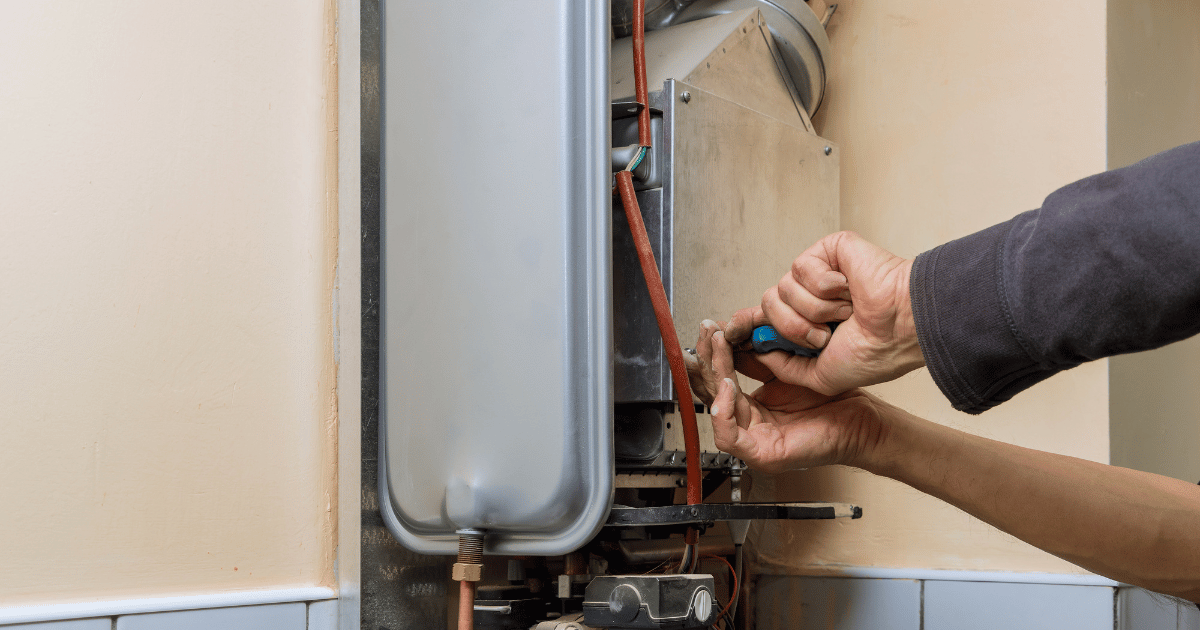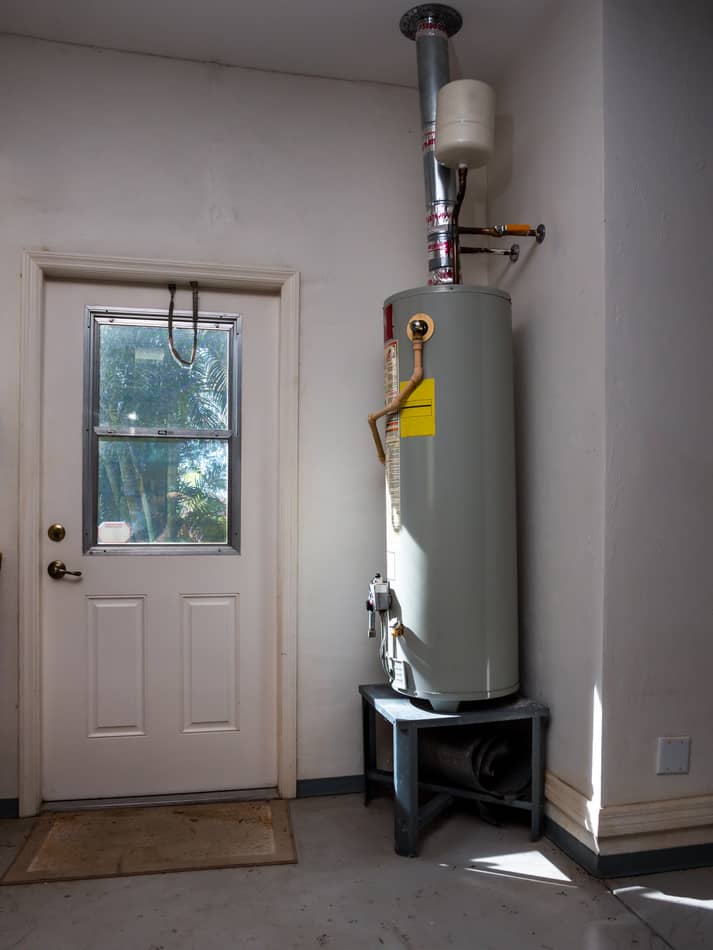Specialist Tips for Maintaining Your Home's Hot Water System
Specialist Tips for Maintaining Your Home's Hot Water System
Blog Article
We've unearthed this post pertaining to What Kind of Maintenance Do Water Heaters Need? down the page on the net and felt it made sense to discuss it with you over here.

Warm water is necessary for day-to-day comfort, whether it's for a rejuvenating shower or washing recipes. To ensure your warm water system runs efficiently and lasts much longer, routine upkeep is vital. This write-up gives sensible pointers and insights on how to maintain your home's hot water system to prevent disruptions and pricey repairs.
Introduction
Keeping your home's warm water system might appear difficult, however with a couple of straightforward steps, you can ensure it operates efficiently for many years to come. This overview covers everything from comprehending your hot water system to DIY upkeep ideas and knowing when to employ expert aid.
Significance of Preserving Your Hot Water System
Regular maintenance not just expands the life-span of your warm water system but also ensures it runs effectively. Overlooking maintenance can lead to lowered efficiency, higher power bills, and even early failing of the system.
Indications Your Warm Water System Requirements Maintenance
Recognizing when your hot water system needs focus can stop major problems. Watch out for signs such as irregular water temperature, odd noises from the heating system, or corroded water.
Purging the Hot Water Heater
Purging your hot water heater eliminates debris build-up, enhancing performance and extending its life.
Checking and Changing Anode Rods
Anode poles avoid corrosion inside the storage tank. Inspecting and replacing them when worn out is important.
Complicated Problems Needing Specialist Aid
Instances consist of major leaks, electrical problems, or if your hot water heater is regularly underperforming.
Routine Professional Upkeep Benefits
Specialist upkeep can consist of detailed assessments, tune-ups, and guaranteeing conformity with safety and security standards.
Evaluating and Changing Temperature Setups
Adjusting the temperature level setups guarantees optimal efficiency and security.
DIY Tips for Upkeep
You can execute a number of maintenance jobs yourself to maintain your hot water system in top problem.
Looking for Leaks
Routinely inspect pipelines and connections for leaks, as these can cause water damage and higher bills.
Recognizing Your Hot Water System
Prior to diving into maintenance jobs, it's valuable to recognize the standard components of your warm water system. Commonly, this includes the water heater itself, pipelines, anode rods, and temperature controls.
Month-to-month Maintenance Tasks
Regular month-to-month checks can help capture minor problems before they rise.
Evaluating Pressure Relief Valves
Examining the pressure safety valve ensures it functions correctly and prevents too much pressure buildup.
Insulating Pipelines
Insulating warm water pipelines decreases warmth loss and can conserve energy.
When to Call a Specialist
While DIY maintenance is advantageous, some concerns call for expert proficiency.
Conclusion
Routine upkeep of your home's hot water system is necessary for performance, durability, and cost savings. By adhering to these pointers and knowing when to seek expert aid, you can ensure a trusted supply of hot water without unexpected interruptions.
Water Heater Maintenance: The Basics
Maintaining your water heater will ensure it operates efficiently and has a longer lifespan. Neglecting regular maintenance can lead to costly repairs and an even bigger chunk of your savings if you have to replace it sooner than necessary. But there’s good news: Most water heater maintenance tasks are relatively simple and easy for homeowners with basic DIY skills.
Flush the Water Heater
Over time, sediment and minerals can build up in the tank, reducing its efficiency and potentially causing damage. To flush the tank, turn off the power or gas supply, attach a hose to the drain valve near the bottom and open the valve to drain the water until it runs clear. Ideally, flush the tank annually.
Replace the Anode Rod
The anode rod is a sacrificial metal rod that helps prevent corrosion inside the tank. Inspect and replace it every three to five years or per the manufacturer's recommendation. To replace the anode rod, turn off the power or gas supply, drain a few gallons of water from the tank, unscrew the old rod and replace it with a new one. If the anode rod is significantly corroded or covered in calcium buildup, it's a sign the water heater may need to be replaced soon.
Tune-Up
A yearly tune-up can help identify potential issues and ensure your water heater operates at peak efficiency. This typically involves checking the thermostat, burner assembly (for gas heaters) and any other components specified by the manufacturer. During a tune-up, the technician may also clean the burner and adjust the pilot light (for gas heaters) or examine the heating elements (for electric heaters).
How to Maintain Your Water Heater
Insulate the tank. Insulating the tank can improve energy efficiency and reduce heat loss, saving you money on energy bills. You can purchase precut insulation blankets designed specifically for water heaters or use standard fiberglass insulation wrapped securely around the tank. Check the temperature. The recommended water temperature for most households is around 120 degrees Fahrenheit (49 degrees Celsius). Higher temperatures can increase energy costs and potentially cause scalding. Use a kitchen thermometer to check the temperature at the faucet nearest the water heater. Monitor water pressure. Excessive water pressure can strain the water heater and cause leaks or even tank failure. Install a pressure-reducing valve if necessary. The ideal water pressure range is between 60 and 70 PSI (pounds per square inch). Test the temperature and pressure (T&P) relief valve. The T&P relief valve is a safety feature that releases pressure if the tank gets too hot or the pressure builds up too high. Test it annually by lifting the lever and allowing a small amount of water to release. Replace the valve if it doesn't release water or reseal properly. Check for leaks. Regularly inspect the tank, pipes and fittings for leaks or corrosion. Deal with issues promptly to prevent further damage. Even a small leak can lead to significant water damage over time. Consider a tankless water heater. If your traditional tank-style water heater is nearing the end of its lifespan ( typically 10 years), consider replacing it with a tankless water heater. These units heat water on demand, reducing standby energy losses and potentially saving you money on your energy bills. Schedule professional maintenance. While homeowners can perform many water heater maintenance tasks, it's still a good idea to schedule professional maintenance every few years. A plumber or HVAC technician can thoroughly inspect the unit, identify potential issues and ensure it operates safely and efficiently. https://www.homeserve.com/en-us/blog/home-improvement/hot-water-heater-maintanence/

Do you really like reading up on How to Maintain a Hot Water Heater in a Few Simple Steps? Write feedback down below. We'd be pleased to listen to your opinions about this write up. We are looking forward to see you back again before long. So long as you liked our blog posting plz don't forget to share it. Kudos for your time. Revisit us soon.
Here Report this page